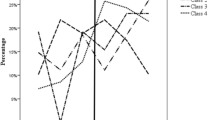Abstract
Introduction
Do not resuscitate (DNR) is an important aspect of medical practice, although few studies from Arab Muslim countries address this issue. King Abdulaziz Medical City (KAMC), Saudi Arabia has a policy addressing all aspects of patient care at end of life.
Objective
To assess compliance of physicians with the current DNR policy.
Methods
A cohort study of data prospectively collected from 15/10/2008 through 15/01/2009 for patients where DNR was initiated. Patient charts were followed prospectively to observe DNR documentation completion. Data were analyzed in terms of frequencies and descriptive statistics, and the results expressed as percentages.
Results
DNR was initiated in 65 patients referred to the intensive care unit (ICU): 46.2% females, 53.8% males; age range 19–93 years, mean ± standard deviation (SD) 66.1 ± 16.0 years. DNR was initiated by ICU physician in 80% of cases and by most responsible physician (MRP) in 20% of cases. There was a delay (of more than 48 h) in completing MRP signature in 8 patients (12.3%), and no signature at all by the MRP in 13 patients (20%). Documentation of discussion with the family was absent in 53.8% of cases.
Conclusions
ICU physicians have a role in initiating DNR. Mostly this issue is not addressed on admission. Documentation of DNR once initiated is still not up to the optimum level in 32.3% of cases, mainly due to MRP. Discussion with the patient’s family was not well documented in the chart in more than half of cases.
Similar content being viewed by others
References
Vincent JL (1999) Forgoing life support in western European intensive care units: the results of an ethical questionnaire. Crit Care Med 27:1626–1633
Bell D (2007) The legal framework for end of life care: a United Kingdom perspective. Intensive Care Med 33:158–162
Vincent JL (2006) End-of-life practice in Belgium and the new euthanasia law. Intensive Care Med 32:1908–1911
Sprung CL, Maia P, Bulow HH, Ricou B, Armaganidis A, Baras M, Wennberg E, Reinhart K, Cohen SL, Fries DR, Nakos G, Thijs LG, Ethicus Study Group (2007) The importance of religious affiliation and culture on end-of-life decisions in European intensive care units. Intensive Care Med 33:1732–1739
Babgi A (2009) Legal issues in end-of-life care: perspectives from Saudi Arabia and United States. Am J Hosp Palliative Med 26(2):119–127
Mobeireek A (1995) The do-not-resuscitate order: indications on the current practice in Riyadh. Ann Saudi Med 15:6–9
Mobeireek A (2000) Physicians’ attitudes towards ‘do-not-resuscitate’ orders for the elderly: a survey in Saudi Arabia. Arch Gerontol Geriat 30:151–160
Takrouri M (2008) An Islamic medical and legal prospective of do not resuscitate order in critical care medicine. Internet J Health 7:1
Rahman M, Arabi Y, Adhami N, Parker B, Al Malik S, Al Shimemeri A (2004) the practice of do-not-resuscitate orders in the kingdom of Saudi Arabia. The experience of a tertiary care center. Saudi Med J 25:1278–1279
Eric De Jonge K, Sulmasy DP, Gold KG, Epstein A, Harper MG, Eisenberg JM, Schulman KA (1999) The timing of do-not-resuscitate orders and hospital costs. J Gen Intern Med 14:190–192
SUPPORT Principal Investigators (1995) A controlled trial to improve care for seriously ill hospitalized patients. JAMA 274:1591–1598
Eues SK (2007) End-of-life care: improving quality of life at the end of life. Prof Case Manag 12:339–344
Sham CO, Cheng YW, Ho KW, Lai PH, Lo LW, Wan HL, Wong CY, Yeung YN, Yuen SH, Wong AY (2007) Do-not-resuscitate decision: the attitudes of medical and non-medical students. J Med Ethics 33:261–265
Matsumura S, Bito S, Liu H, Kahn K, Eukuhara S, Kagawa-Singer M, Wenger N (2002) Acculturation of attitudes toward end-of-life care. J Gen Intern Med 17:531–539
Asai A, Fukuhara S, Lo B (1995) Attitudes of Japanese and Japanese–American physicians towards life-sustaining treatment. Lancet 346:356–359
Christakis NA, Asch DA (1995) Physician characteristics associated with decisions to withdraw life support. Am J Public Health 85:367–372
Sprung CL, Woodcock T, Sjokvist P, Ricou B, Bulow HH, Lippert A, Maia P, Cohen S, Baras M, Hovilehto S, Ledoux D, Phelan D, Wennberg E, Schobersberger W (2008) Reasons, considerations, difficulties and documentation of end-of-life decisions in European intensive care units: the ETHICUS Study. Intensive Care Med 34:271–277
Yazigi A, Riachi M, Dabbar G (2005) Withholding and withdrawal of life sustaining treatment in a Lebanese intensive care unit: a prospective observational study. Intensive Care Med 31:562–567
Adib SM, Kawas SH, Hajjar TA (2003) End-of-life issues as perceived by Lebanese judges. Develop World Bioethics 3:10–26
Chang RW, Lee B, Jacobs S, Lee B (1989) Accuracy of decisions to withdraw therapy in critically ill patients: clinical judgment versus a computer model. Crit Care Med 17:1091–1097
Costa DE, Ghazal H, Al Khusaiby S (2002) Do not resuscitate orders and ethical decisions in a neonatal intensive care unit in a Muslim community. Arch Dis Child Fetal Neonatal Ed 86:F115–F119
Hickey M (1990) What are the needs of families of critically ill patients? A review of the literature since 1976. Heart Lung 19:401–415
Johnson D, Wilson M, Cavanaugh B, Bryden C, Gudmundson D, Moodley O (1998) Measuring the ability to meet family needs in an intensive care unit. Crit Care Med 26:266–271
Singer PA, Martin DK, Kelner M (1999) Quality end-of-life care: patients’ perspectives. JAMA 281:163–168
Ferrand E, Robert R, Ingrand P, Lemaire F, for the French LATAREA group (2001) Withholding and withdrawal of life support in intensive care units in France: a prospective survey. Lancet 357:9–14
Levy MM (2001) Evaluating our end of-life practice. Crit Care 5:182–183
Carlet J, Thijs LG, Antonelli M, Cassell J, Cox PN, Hill NS, Hinds CJ, Pimentel JM, Reinhart K, Thompson BT (2004) Challenges in end-of-life care in the ICU: statement of the 5th international consensus conference in critical care: Brussels, Belgium, April 2003: executive summary. Intensive Care Med 30:770–784
Author information
Authors and Affiliations
Corresponding author
Rights and permissions
About this article
Cite this article
Gouda, A., Al-Jabbary, A. & Fong, L. Compliance with DNR policy in a tertiary care center in Saudi Arabia. Intensive Care Med 36, 2149–2153 (2010). https://doi.org/10.1007/s00134-010-1985-3
Received:
Accepted:
Published:
Issue Date:
DOI: https://doi.org/10.1007/s00134-010-1985-3




